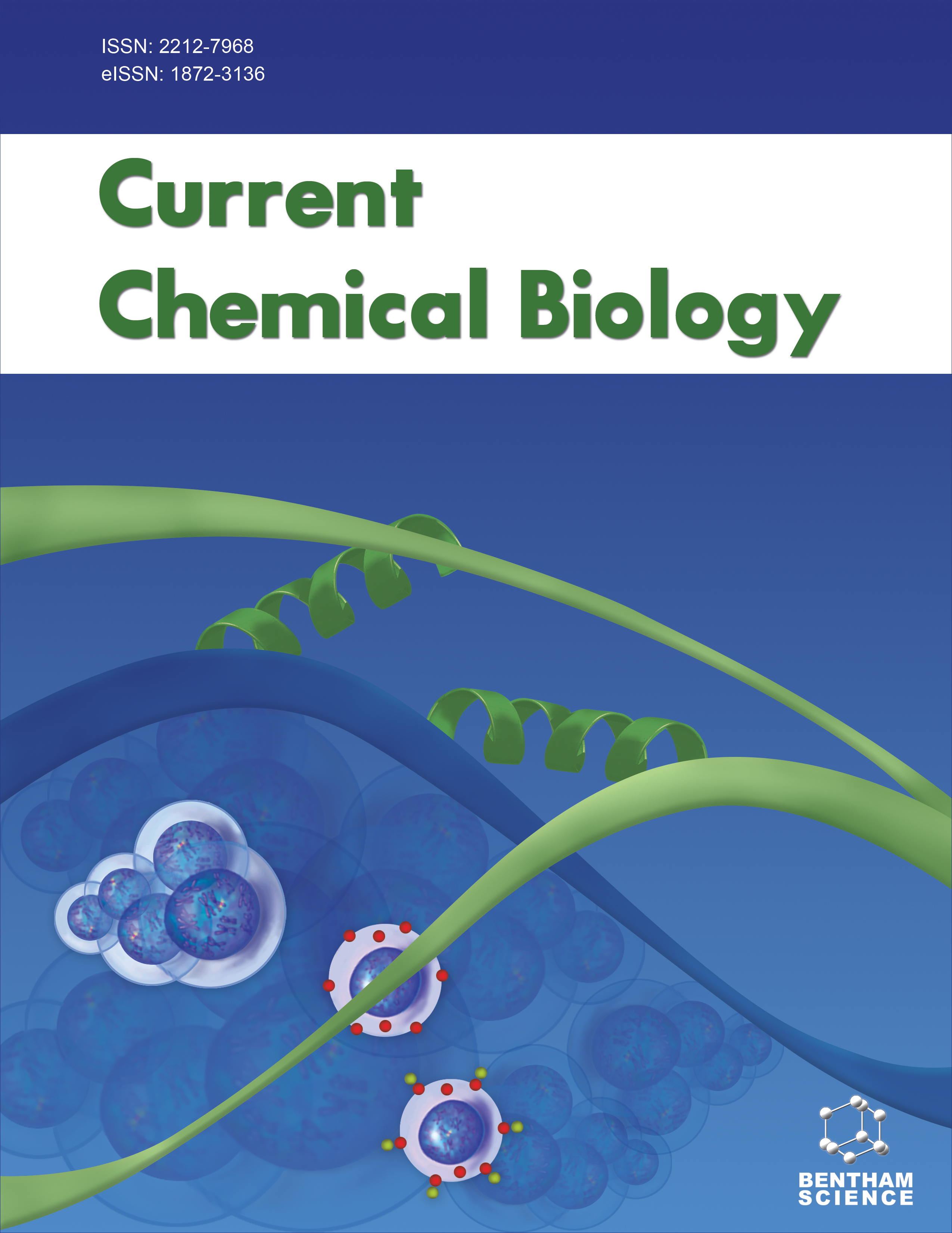- Home
- A-Z Publications
- Current Chemical Biology
- Previous Issues
- Volume 4, Issue 2, 2010
Current Chemical Biology - Volume 4, Issue 2, 2010
Volume 4, Issue 2, 2010
-
-
Protein Chemistry of Amyloid Fibrils and Chaperones: Implications for Amyloid Formation and Disease
More LessAuthors: Justin J. Yerbury and Janet R. KumitaUnderstanding the mechanisms by which amyloid fibrils are formed, both in vivo and in vitro, is vital for developing methods to treat and prevent debilitating deposition diseases such as Alzheimer's disease, Parkinsona's disease, type II diabetes and systemic amyloidoses. In recent years, computer modelling and biophysical studies have broadened our understanding of the biochemical mechanisms underpinning protein a Read More
-
-
-
Ricin and Saporin: Plant Enzymes for the Research and the Clinics
More LessMany plants produce enzymes with N-glycosidase activity, also known as Ribosome Inactivating Proteins. These proteins remove a specific adenine residue from the ribosomal RNA (28S in eukaryotes) inducing the block of protein synthesis by inhibiting the binding of the Elongation Factor 2. Both eukaryotic and prokaryotic ribosomes (with different sensitivity) can irreversibly be damaged by the action of these enzymes, suggestin Read More
-
-
-
The Carnitine Transporter Network: Interactions with Drugs
More LessAuthors: Cesare Indiveri, Lorena Pochini, Francesca Oppedisano and Annamaria TonazziCarnitine homeostasis has a pivotal role in the life of mammals. It is realized by the carnitine system, which consists of networks of enzymes and membrane transporters and plays an essential role in functions such as the regulation of the CoA/acyl-CoA ratio, the supply of substrates for the β-oxidation to mitochondria and peroxisomes and of acyl units for VLDL assembly to the ER, the efflux of acetyl groups from mitochondria Read More
-
-
-
Anisomycin is a Multifunctional Drug: More than Just a Tool to Inhibit Protein Synthesis
More LessAnisomycin is a bacterial antibiotic isolated from Streptomyces griseolus. Anisomycin is mainly known as a potent and reversible inhibitor of protein synthesis in eukaryotic organisms that acts by binding and inhibiting peptidyl transferase activity of 60S ribosomal subunit. Interestingly, anisomycin has been widely used as an extremely potent activator of mitogen-activated protein kinase (MAPK) cascades in mammalian cells, especi Read More
-
-
-
Enhanced Activity of pSTAT-3 Ser-727 in Functional Endothelial Cells Under Calcifying Conditions
More LessVessel calcification involves an active cellular process. However, the events by which calcification occurs in vascular endothelial cells have not been sufficiently studied. We performed experiments that evaluated the effect of osteogenic medium (OM) on alkaline phosphatase activity, signaling pathways and cell death in human umbilical vein endothelial cells (HUVEC). We found that OM emits a survival signal at the beginning of Read More
-
-
-
Synthesis of Some Mannich Bases and Novel Benzofuran Derivatives Containing Imidazo[2,1-b][1,3,4]thiadiazoles as Biological Agents
More LessAuthors: Venkatesh K. Bhovi and Yadav D. BodkeAn efficient route for the synthesis of 6-(1-benzofuran-2-yl)-2-phenyl imidazo[2,1-b] [1,3,4] thiadiazole(4a-e), was achieved by the reaction of 1-(1-benzofuran-2-yl)-2-bromoethanone (2) with 5-aryl-1,3,4-thiadiazol-2-amine(3-ae). The reaction mixture containing compound 4d with secondary amines and formaldehyde with catalytic amount of acetic acid, furnished corresponding Mannich bases (5-7). All newly synthesized com Read More
-
-
-
Nanomaterials as Emerging Environmental Threats
More LessAuthors: Sara Tedesco and David SheehanNanomaterials have one dimension < 100nm and possess chemical properties dictated by chemical composition, their unusually small size and very large proportional surface area. Even chemically inert materials can have significant chemical activity on the nanoscale (e.g. surface catalysis). Some nanomaterials are toxic in biological scenarios but remarkably little is known about this, especially in terms of key attrib Read More
-
-
-
Cell Adhesion Molecules and Cadmium
More LessThe heavy metal cadmium (Cd) is an environmental toxin that causes specific problems in liver, kidney, bone and reproductive tissue. It is thought to act as both carcinogen and co-carcinogen, and it causes developmental anomalies in a number of animal species. Numerous mechanisms are thought to underlie these toxic and teratogenic effects, including genotoxicity, oxidative stress and caspase activation. One of the most r Read More
-
-
-
Metallochaperones - an Overview
More LessImproper allocation of the incorrect metal ion to a metalloprotein can have resounding and often detrimental effects on different aspects of cellular physiology. Enzymes that employ transition metals as co-factors are housed in a wide variety of intracellular locations or are exported to the extracellular milieu. Metallochaperones (much smaller than the cell) are essential for the proper functioning of cells and are a distinct cl Read More
-
Volumes & issues
Most Read This Month
Article
content/journals/ccb
Journal
10
5
false
en


